A feast with the Ferragamos
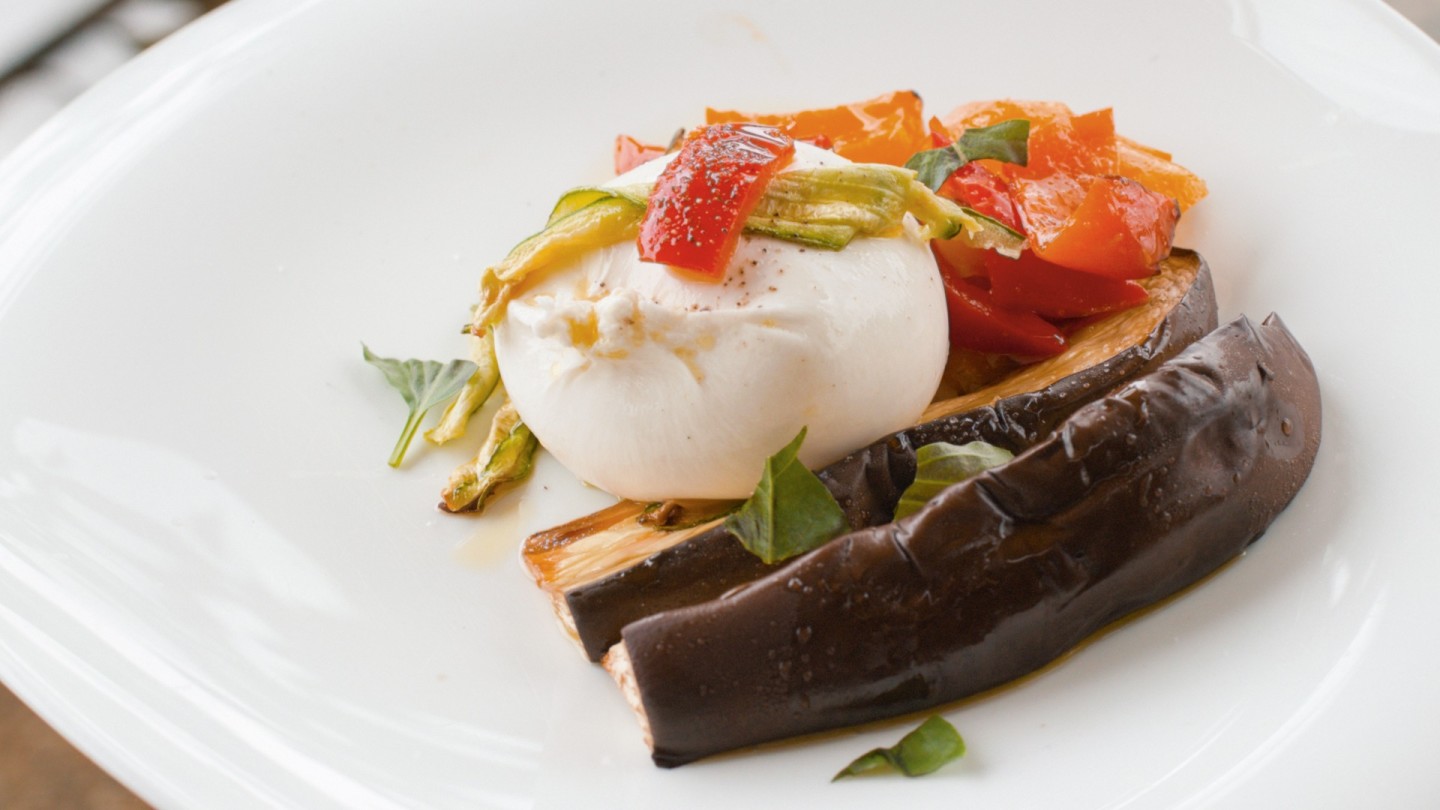
Roula Khalaf, Editor of the FT, selects her favourite stories in this weekly newsletter.
It rained overnight in the Val d’Arno. “A desert rain,” says Salvatore Ferragamo, grandson of the legendary Italian shoemaker, and CEO of Il Borro, the 3,200-acre farm, wine and hotel estate near Arezzo that I’ve come to see ahead of the opening of a new London restaurant inspired by its culture of food and wine. Salvatore points to a row of cars in front of us. Each is splattered with sandy dirt that has been transported by the winds from north Africa, released in the downpour and baked on in the sweltering Tuscan heat.
By contrast, the Land Rover Defender that we’re hopping into for our tour is gleaming. It’s not Salvatore’s. His is at the mechanic’s. This one is owned by his father Ferruccio, who until recently was chairman of Salvatore Ferragamo, the luxury-goods company headquartered in Florence about 60km away. Now 76, Ferruccio spends a lot of his time at Il Borro (he is chairman of the board), immersing himself in every aspect of running the estate. Today, Ferruccio has been picking the brains of Claudio, the Argentinian cowherd who looks after the Chianina, one of the oldest cattle breeds in Tuscany. You might also find him with a chainsaw, out in the fields, cutting wood.
“My father really likes to understand the details of what he is dealing with,” says Vittoria, his youngest daughter, who looks after the organic gardens and special projects at Il Borro and is joining us on our tour.
There are now around 90 descendants of the founder Salvatore Ferragamo, with the first of the fifth generation, a daughter, born this year. Ferruccio grew up as one of six children of the Bonito-born shoemaker who built an international empire. And while each sibling has played their part in the family’s luxury business, they have also always run their own private enterprises alongside (Il Borro is Ferruccio’s). Rules brought in by the family, which still owns a majority share in the business, specify that only three members can work at the fashion company at any time: currently these are James (director of shoes and leather goods) and his cousins Angelica (director of wholesale) and Diego (who coordinates digital activities). Of Ferruccio’s six children – twins James and Salvatore, Vivia, Olivia and Vittoria with his first wife, and Francesco with his second – Salvatore and Vittoria were on track to join the company, but have opted to work with their father and make Il Borro their first concern instead.
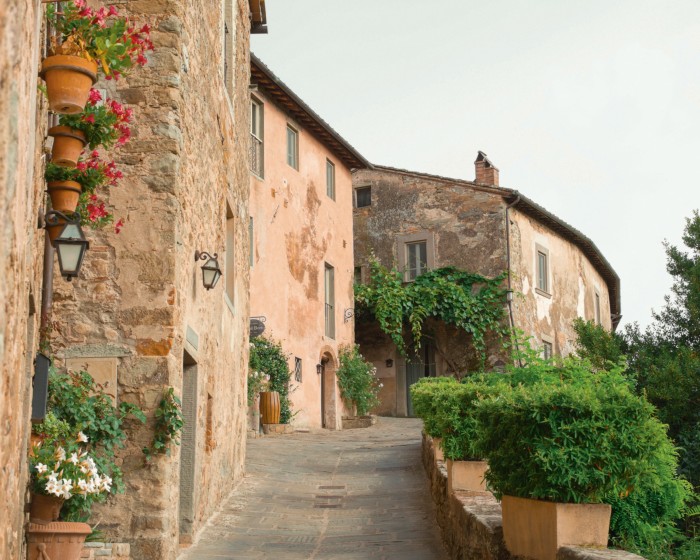
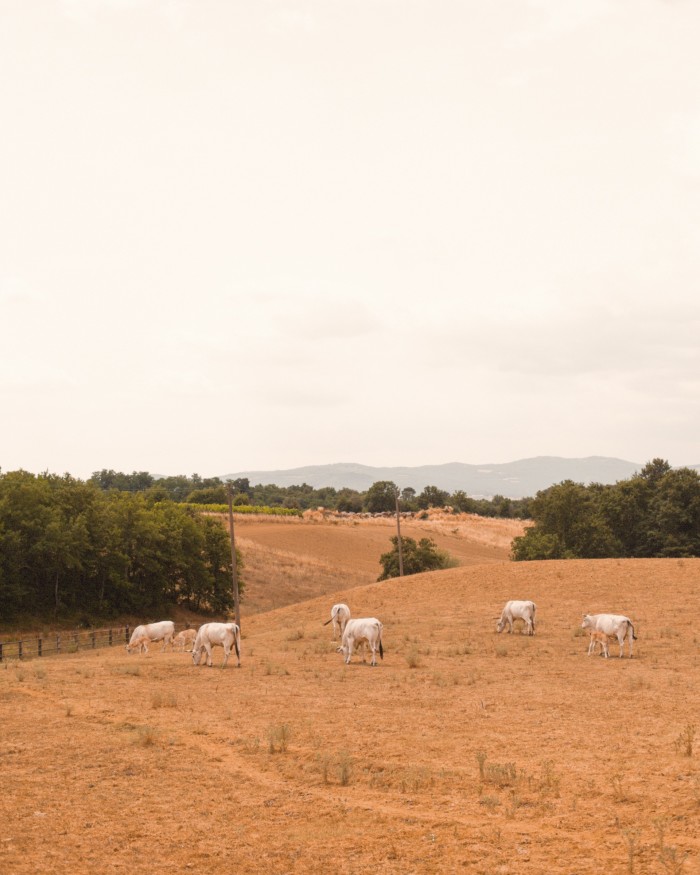
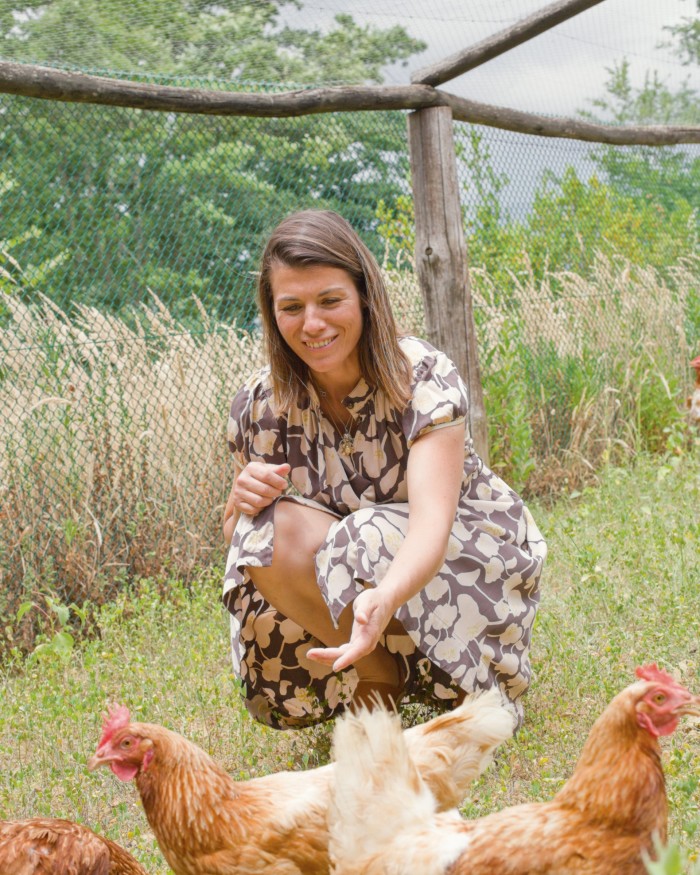
It’s easy to see why. Setting out on our tour, we rumble first past the paddocks, where Vittoria breeds show-jumping horses and the foals spend most of their day lying flat on the grass, toppled by the heat. We arrive at one of the vineyards, this one home to Sangiovese, though the estate also grows Chardonnay, Cabernet Sauvignon, Syrah and Merlot, which go into producing Il Borro’s dozen organic wines. The wine cellars on the estate consist of a network of tunnels and caverns (some 300 years old), filled with steel tanks and oak barrels, and the occasional huddle of Tuscan vintners appreciatively sniffing at the wine.
Next are the beehives, 30 in total – depending on the year, they yield honey that tastes sweet and flowery or bitter and aromatic with chestnuts. Here are patches of the organic garden, planted with beetroot, tomatoes and herbs. Like the grape harvest, the vegetables are prey to wild boars, so dogged in their rampaging that one year they charged the electric perimeter and gorged on 70 tons of grapes in one night. A metal barricade now keeps them at bay.
Further on, we reach the pasture where the Chianina graze. We get out to admire. But, as Salvatore points out, they’re not remotely friendly. They turn their backs on us and clomp off in the opposite direction. We end up at the chicken enclosure, home to two breeds of Tuscan hen, Gallina Ovaiola Rossa and Livornese, and some extremely vocal roosters. “Cock-a-doodle-do!” they holler as Vittoria crouches down to coax some hens out of the coop for a photograph. Without much luck, it turns out. She is reminded of a trick she picked up from her aunt, who could hypnotise and put the birds to sleep with a Svengali-like fluttering of her fingers. It was a sleight of hand her aunt used once, when young, on the family farm to fool the woman who looked after the hens into thinking they were dead. Such is the wickedness of children. The story wouldn’t feel out of place in an old Tuscan fairy tale.
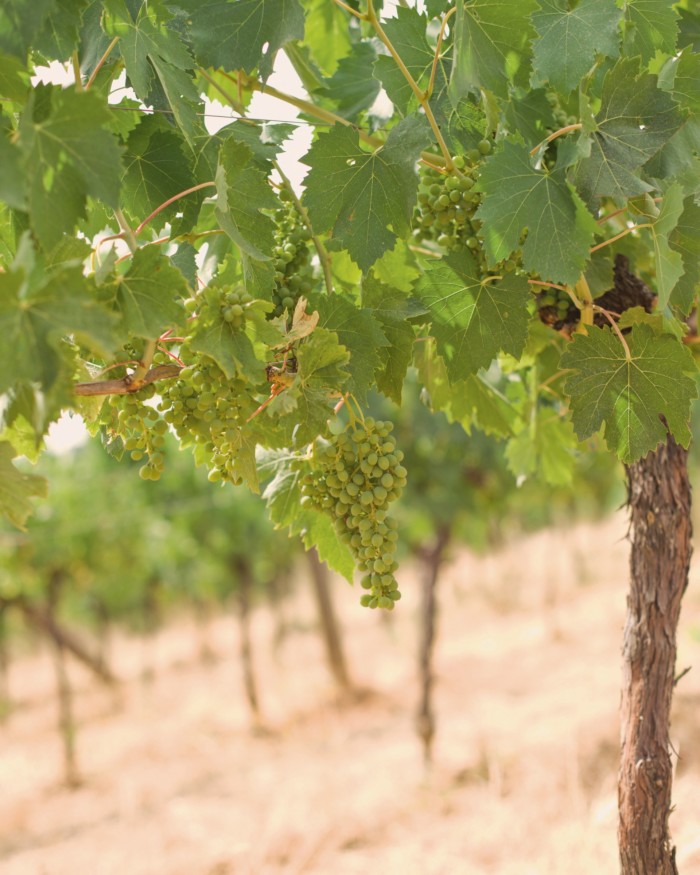
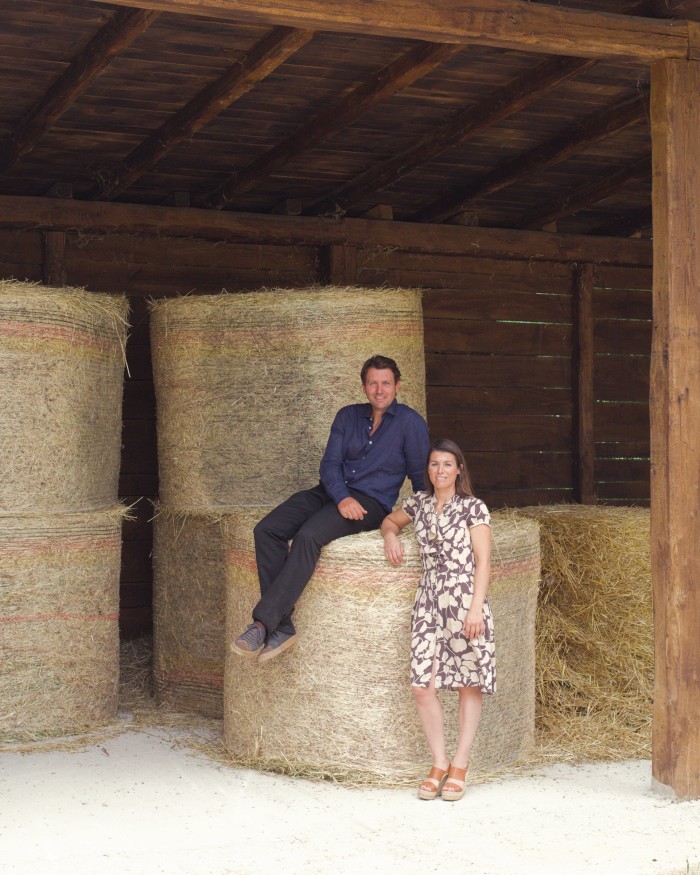
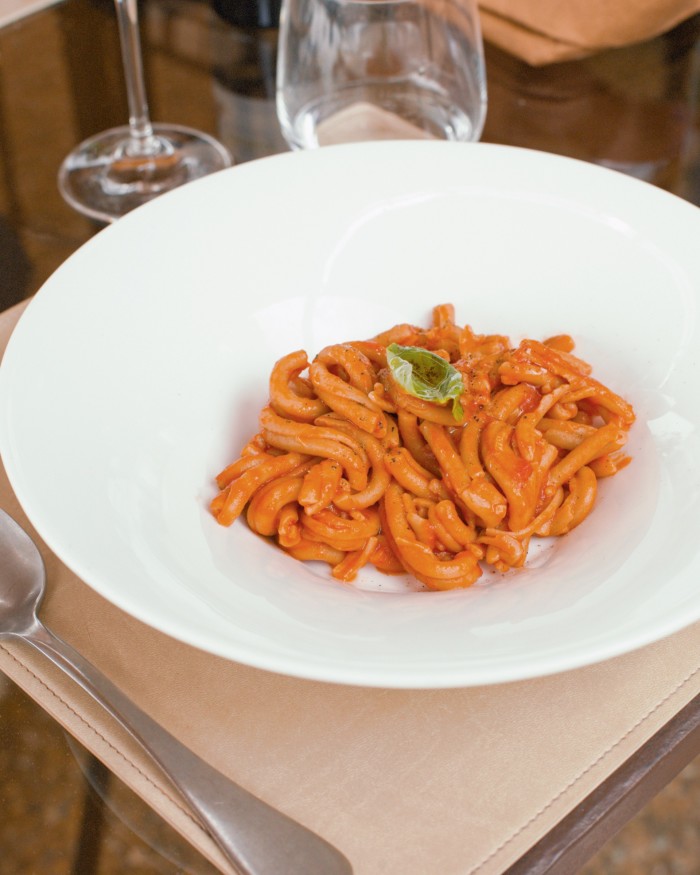
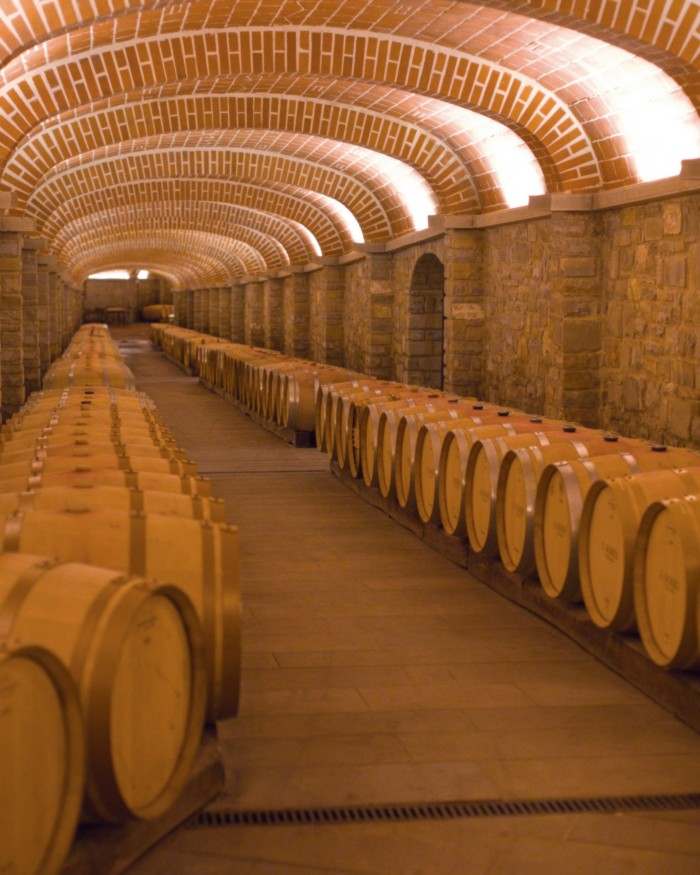
But then this place abounds with stories. One of the most remarkable is about how the family came to purchase Il Borro in the first place. In the 1980s, Ferruccio rented the property as a weekend retreat. At the time, the estate was miserably run-down. The family hunted for wild boar and pheasant and stayed in an apartment in the main villa, which was mostly destroyed by mines left by the Germans at the end of the war. For the children, life at Il Borro was an adventure, where they had the run of the best countryside in Tuscany. Salvatore remembers the ghost stories they told, tales of German soldiers inadvertently killed by their own explosives, stalking the ruins of the villa and slamming doors shut in the middle of the night.
Ferruccio was crazy about the place, awed by its beauty and sense of history. Previous inhabitants had included the Medici family and Alessandro dal Borro, Field Marshal of the Holy Roman Empire, known as the “Terror of the Turks” for his campaigns against them, and famed for being grossly obese (his rotund figure now appears on the label of Il Borro’s limited-edition Syrah). When Il Borro’s previous owner, Duke Amedeo of Savoy-Aosta, decided to sell, Ferruccio seized the opportunity.
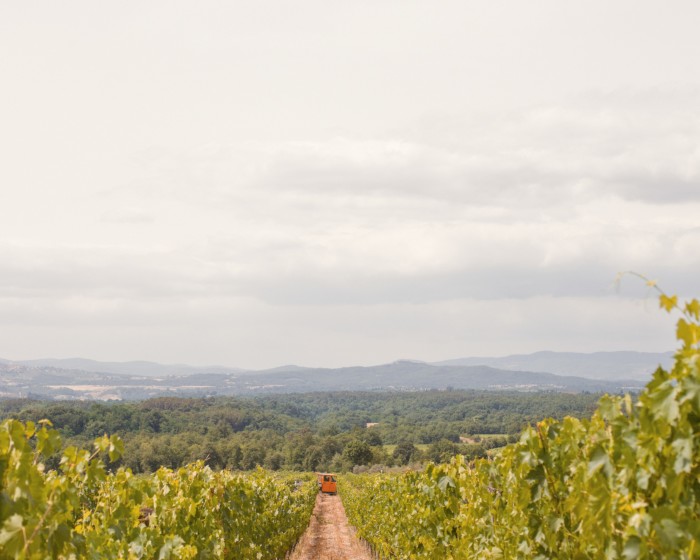
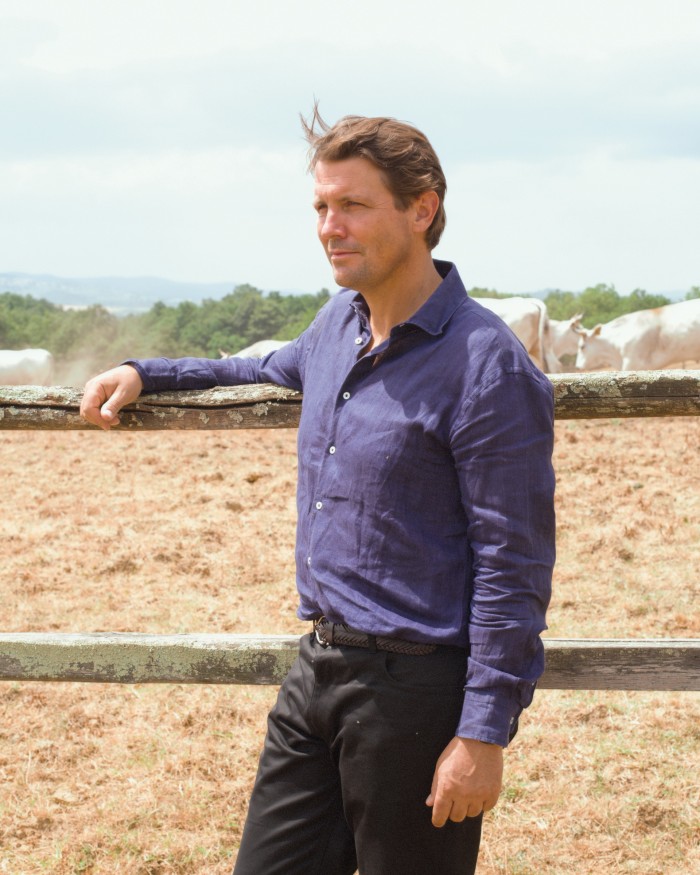
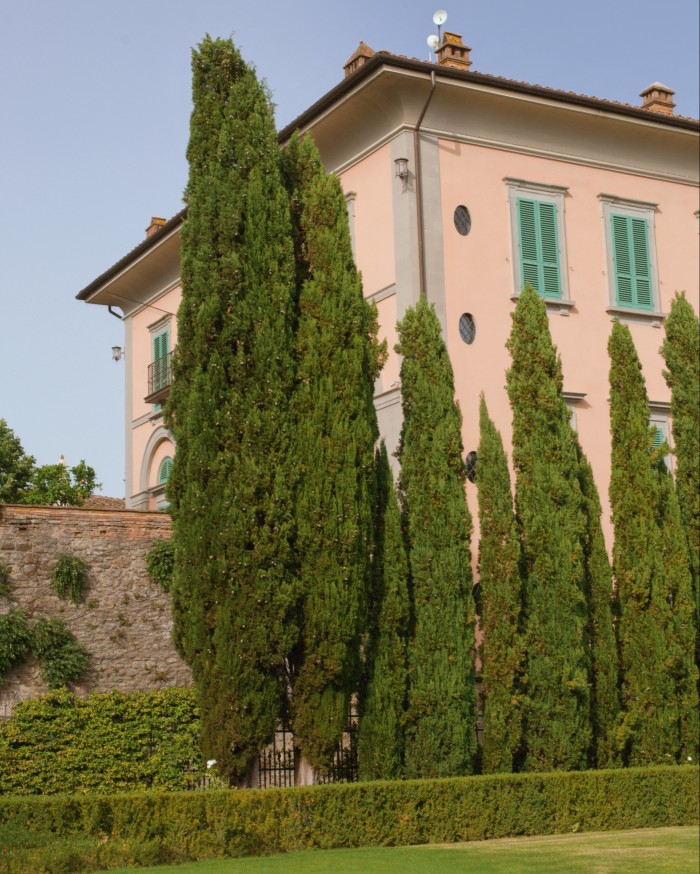
Following his purchase in 1993, he launched a major restoration. The villa and medieval hamlet, which is divided into 38 luxury suites, now form part of a five-star Relais & Châteaux resort that is carbon-negative thanks to its extensive solar panels. Vines were first planted in 1994; today the estate produces around 200,000 bottles of wine a year, combining traditional viticulture practices such as the use of Impruneta terracotta pots to age wine (resulting in the Petruna, a fruity red made from 100 per cent Sangiovese) with state-of-the art technology such as an optical device that automatically separates the grapes. Salvatore also reactivated an appellation, Valdarno di Sopra DOC, first created by Cosimo de’ Medici in 1716.
When the farm was certified organic in 2014, it contributed to Il Borro’s standing as a destination for food. Alongside the two restaurants on the estate, Osteria del Borro and Il Borro Tuscan Bistro, the family has opened restaurants in Florence and Dubai, inspired by the estate’s practices of biodynamic and organic farming. And in October, a London Il Borro Tuscan Bistro will open off Berkeley Square in a site formerly occupied by Nobu. As well as premium Tuscan produce (sourced from suppliers like Natoora), the menu will feature Il Borro ingredients such as its extra-virgin olive oil, honey and select vegetables. Our post-tour lunch is, in fact, a good showcase for some of the summer options. Dishes include burrata with marinated aubergine and peppers, spelt casarecce pasta with tomato purée, and chickpea pie with zucchine alla scapece (courgettes fried and dressed in garlic, vinegar and mint). In addition, the London restaurant will celebrate aspects of Tuscan cooking, with a menu devised by Il Borro’s executive chef Andrea Campani and his Dubai counterpart, Fulvio Opalio. Campani, who grew up nearby, says he favours dishes he would be “proud to make for my grandmother”. That’s to say, simple, authentic, traditional. I’m repeatedly struck by how understated many of the dishes are, how restrained the seasoning. The ingredients speak for themselves and do so without fanfare.
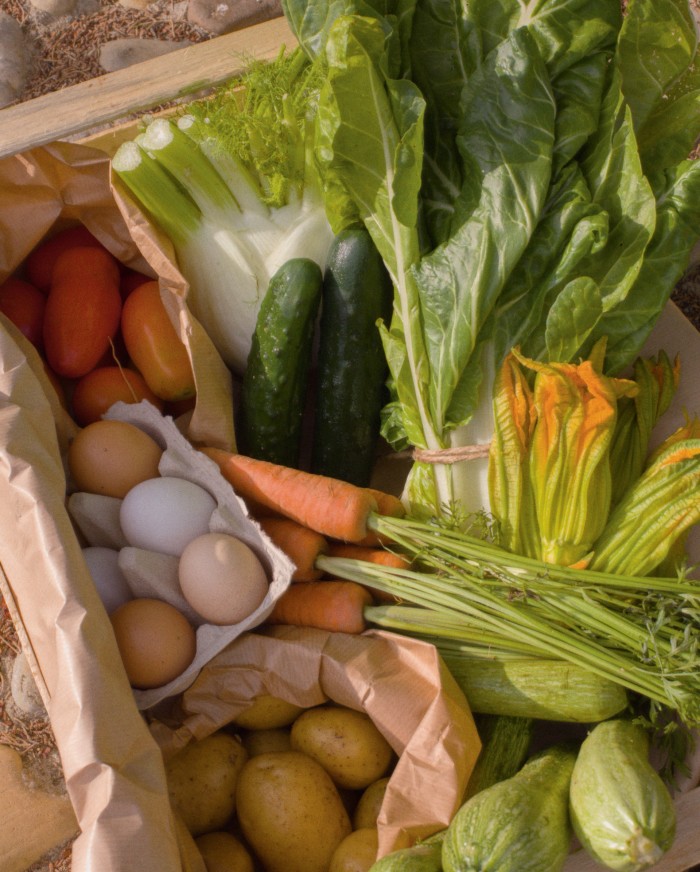
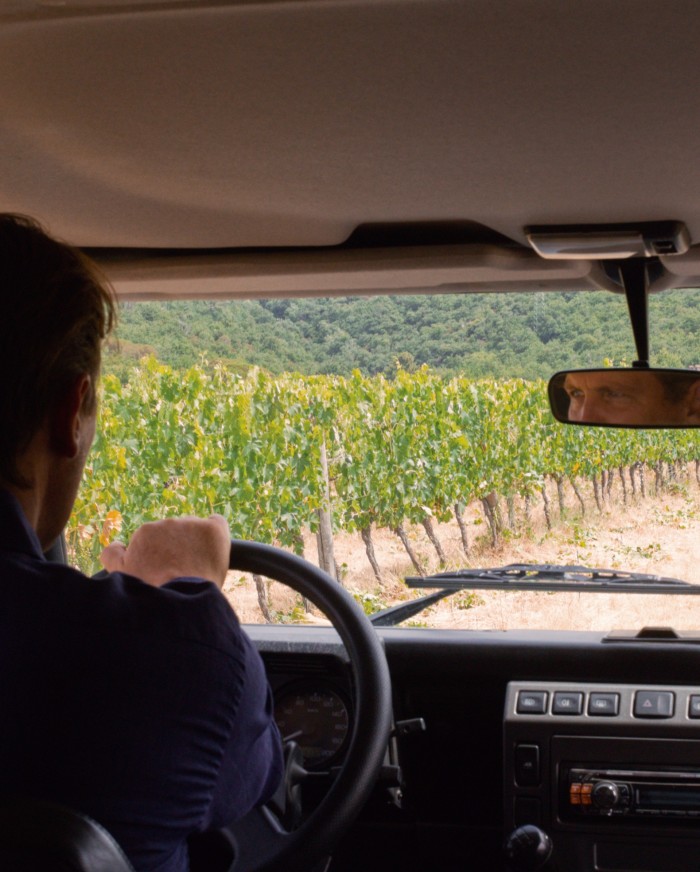
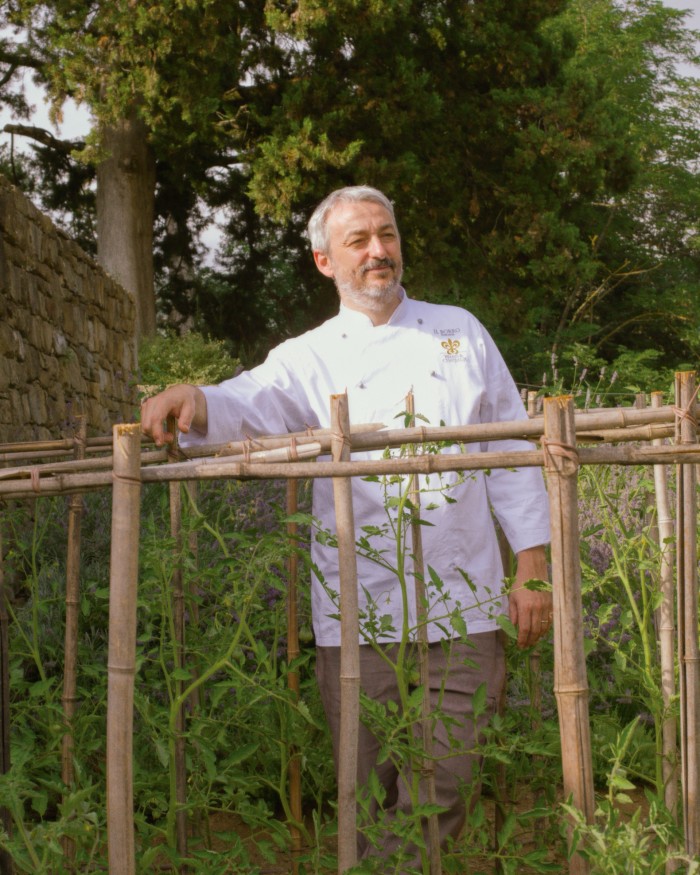
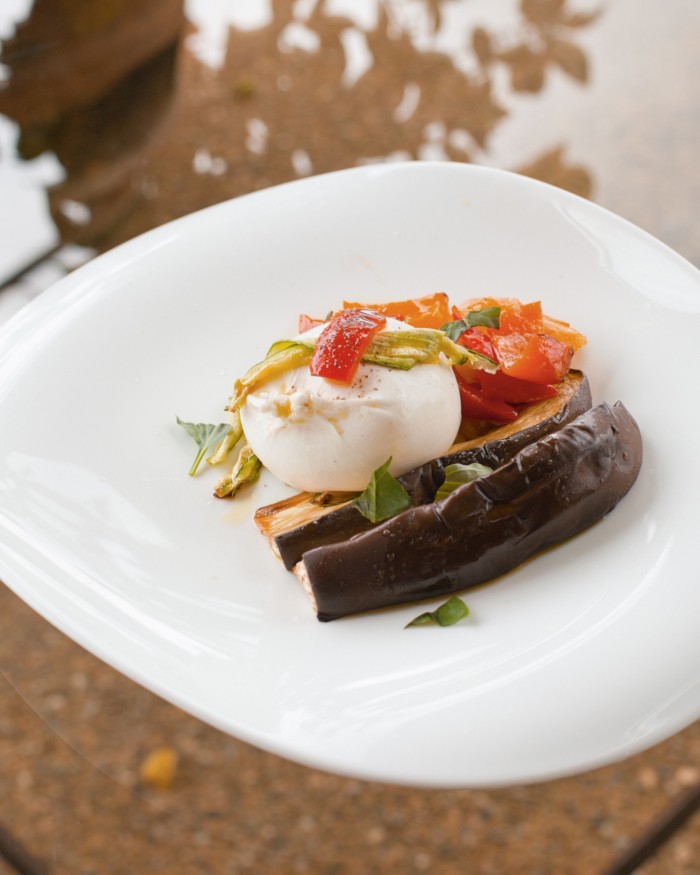
For London, Campani envisions Tuscan classics such as pappa al pomodoro, panzanella and crostini ai fegatini di pollo (chicken liver pâté on bread, made the Tuscan way with vin santo sweet wine). He mentions ribollita (bean and black cabbage soup), chicken alla diavola (so called because the chicken drips fat onto the hot coals, coaxing flames like hellfire) and beef cheek stewed in Sangiovese grapes, which turns dark purple after eight hours and is best served with mashed potato, horseradish and chicory. Inevitably for a Mayfair restaurant, the options will also include dishes such as oscietra caviar, tagliata di Wagyu and thin-base, soft-centre pizzas – not exactly Tuscan but good business all the same.
Of course, restaurants are about more than food. And Il Borro is about more than business. It’s also a family home, a well of shared memories. For Vittoria, a one-time champion showjumper, some of her favourite memories include heading out with Salvatore and their English cousin Flora to race ponies in the woods or down the airstrip, a kilometre-long stretch of perfect grass intended for small propeller planes.
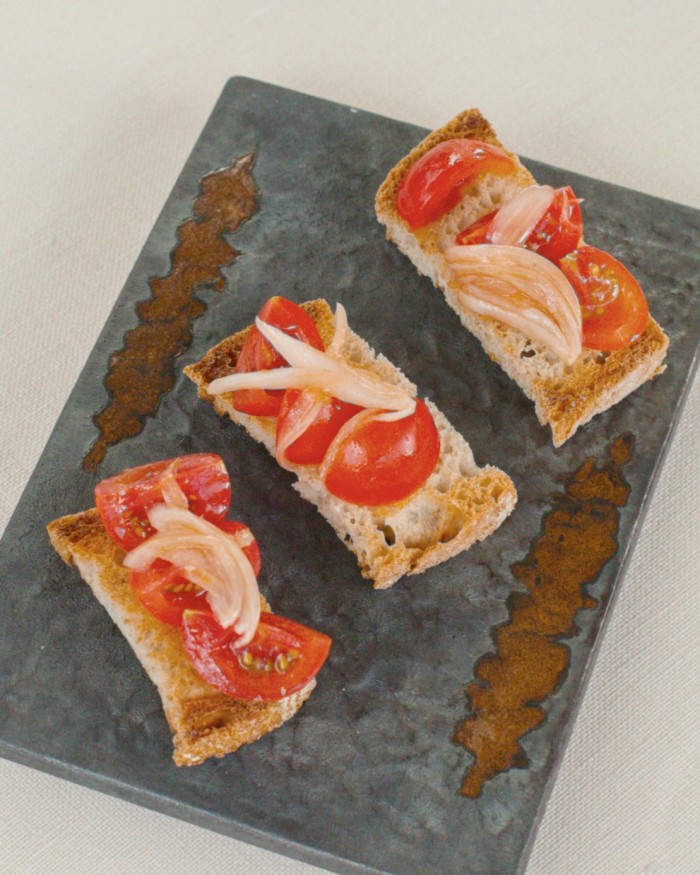
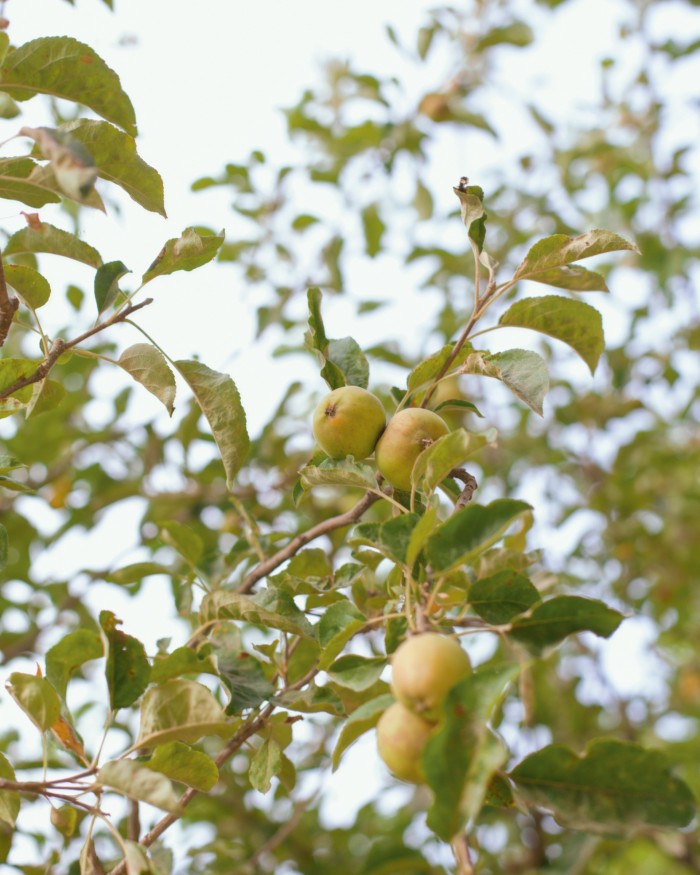
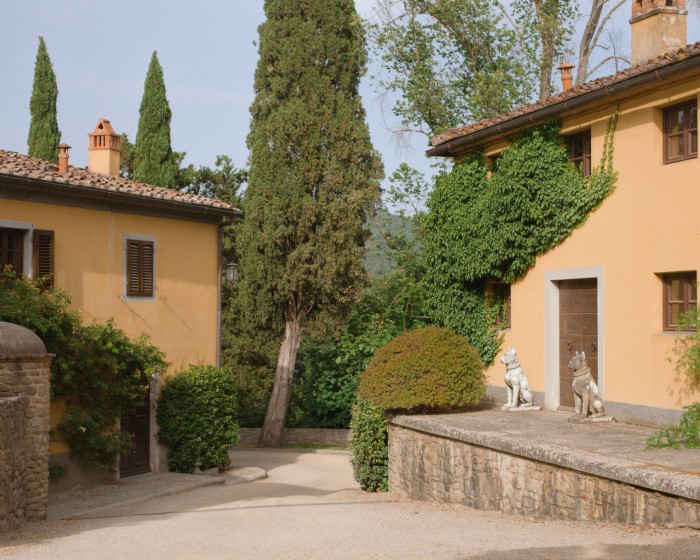
Except for Francesco, each of Ferruccio’s children keeps a house on the estate. But at one point, Salvatore, Vivia, Vittoria and their families shared a farmhouse, borrowing from each other’s fridges, spilling into each other’s spaces, dogs careering in and out. “It was so much fun,” says Vittoria. If anything, it’s this idea of family coming together, of community and kinship, that the Ferragamos most easily exemplify and seem keen to engender in others, particularly in light of recent times. They talk of their late grandmother as a guiding light. “She instilled these values in us,” says Vittoria. “Try to get along. Try to understand each other. Family is so important. Sustain each other.”
Food was sometimes a part of that. Vittoria recalls her grandmother making gnudi (ricotta and spinach dumplings) from scratch and inviting a pizzaiola up from Naples to cook for the extended family – often dozens of relatives. Her grandmother was also a broker of peace, insisting the girls wear the same dresses for Easter or Christmas to stave off arguments (“They looked like dolls,” says Salvatore); the boys did sports to foster a sense of camaraderie.
I hear more tales, such as one about the wartime priest, Don Pasquale Mencattini, who negotiated with the Germans to save the men of the village from being shot. But more cheerful are stories of family, like one about their grandfather and how he met the love of his life aged 42.
“My grandfather travelled the world,” says Salvatore. “He became known as a shoemaker to Hollywood stars. He knew all the most beautiful women of his generation. But he never married. He was too busy in his job. Because of his success, the mayor of his hometown – a little comune called Bonito, in Avellino, in the south – invited him to celebrate. He wanted to see his mother so he came back. It was there in the house of the mayor that he met his wife. She was the mayor’s daughter. She was 19 years old. It was love at first sight. A year later they were married.”
There is only one thing to say to that. Salute!
Comments